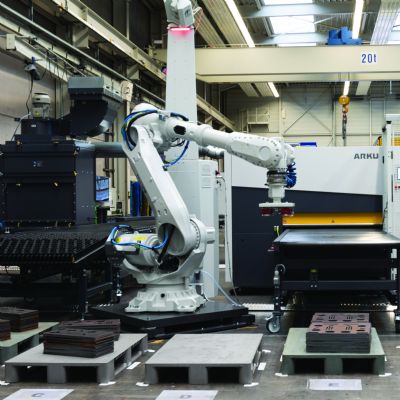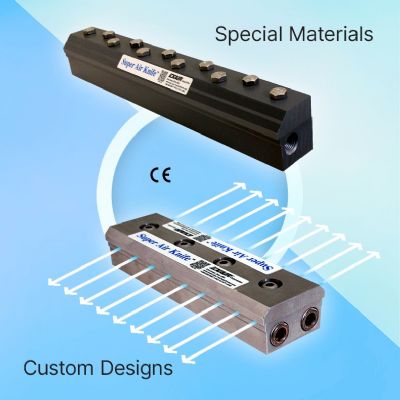Right Abrasive Optimizes Belt Sanding of Weldments
February 1, 2009Comments
Mike Walker, fabrication-shop supervisor for North Carolina-based Bartimaeus by Design, was willing to try a ceramic abrasive used on belt sanders. The salesman told him that it was a higher grade than the 40-grit zirconia belts Walker was using; and it would last longer. If the claims were true, the manufacturer of aluminum table and chair legs would save a lot of money.
Fortunately, Walker only bought one belt: The ceramic abrasive put a smooth finish on only 10 parts before it broke and had to be replaced. That’s a far cry from the 35 to 40 parts his crew can finish with one zirconia belt from Klingspor, Hickory, NC, an abrasives manufacturer that Walker has favored for nearly 11 years.
Bartimaeus by Design demands that the abrasives it uses meet high standards: a consistent high-quality polished finish on all products, including stainless steel; and durability that allows uninterrupted production.
“Everything we do has to look good because very few parts that we make are hidden,” explains Walker. “It’s all out in the open. Since we do a lot of polishing of stainless steel and aluminum, we go through a lot of different sanding grits in order to get it ready to polish before we send it out the door. It’s all about looks.”
In addition, poor-quality abrasives that require constant changeouts slow productivity, dampen morale and take a significant bite out of profit. So the company is more than willing to pay a little more for abrasives that reduce downtime.
“It costs a little more but in the long run we save money,” says Walker. “Klingspor products, such as quick-change flap discs, are designed to make rotations and changeouts speedy.”
Walker supervises nine other employees who use a variety of abrasives, such as discs, wheels and nonwoven belts.
“We brush a lot of stainless steel—tubing or flat-stock sheets,” Walker says. “People don’t like to see welds, so we have to go in and make it look like it’s grown together naturally. There’s a lot of cutting off of welds and grinding. All of it is done by hand.”
But despite the tough demands, Walker says his abrasives are als consistent and predictable.
“I know how many parts I can get out of each belt,” Walker says. “The consistency is so good I can’t tell where somebody has changed the belt in the middle of the run.”
Each grit is rated during the manufacturing process, and tolerances are necessarily kept tight. For example, if the grade of 100-grit sandpaper varies slightly from one lot to the next, the user of that product may see significant differences when trying to polish a surface. Grit grades must be exact and predictable so that firms such as Bartimaeus can trust that their products will meet quality standards.
Sizing is another important quality-control issue. Consider a 5-in.-dia. disc. If the abrasive is even 1⁄8 in. smaller or larger, supervisors like Walker will notice problems in production. If the disc is too small, the rubber backing from the disc sander may be exposed and leave streaks on the surface of the product. If the disc is too large, the abrasive may gather around the edges of the sander and gouge surfaces.
Clogging of abrasives can be a problem with some alloys such as brass, bronze and soft aluminum. Clogging may be due to static buildup during the sanding process. The Klingspor solution relies on antistatic strategies, including an “open coat” process: By maintaining space between grit clusters, resins from metal shavings and dust naturally fall a rather than adhere to the abrasive. This allows a shop’s dust-collection system to easily remove particles from the environment. Also, a stearate, which acts like a dry lubricant, is applied to all abrasives to discourage clogging.
Klingspor: 800/645-5555; www.klingspor.com
View Glossary of Metalforming Terms
See also: Klingspor Abrasives, Inc.
Technologies: Finishing
Comments
Must be logged in to post a comment. Sign in or Create an Account
There are no comments posted. Finishing
FinishingWhy Automated Deburring Works in Fabrication
Lou Kren Thursday, March 30, 2023
 Cutting
CuttingCustom Air Knives for Unique Applications
Tuesday, April 19, 2022
 Finishing
FinishingOberg Medical Acquires Surface-Prep and Finishing Company
Wednesday, August 19, 2020





